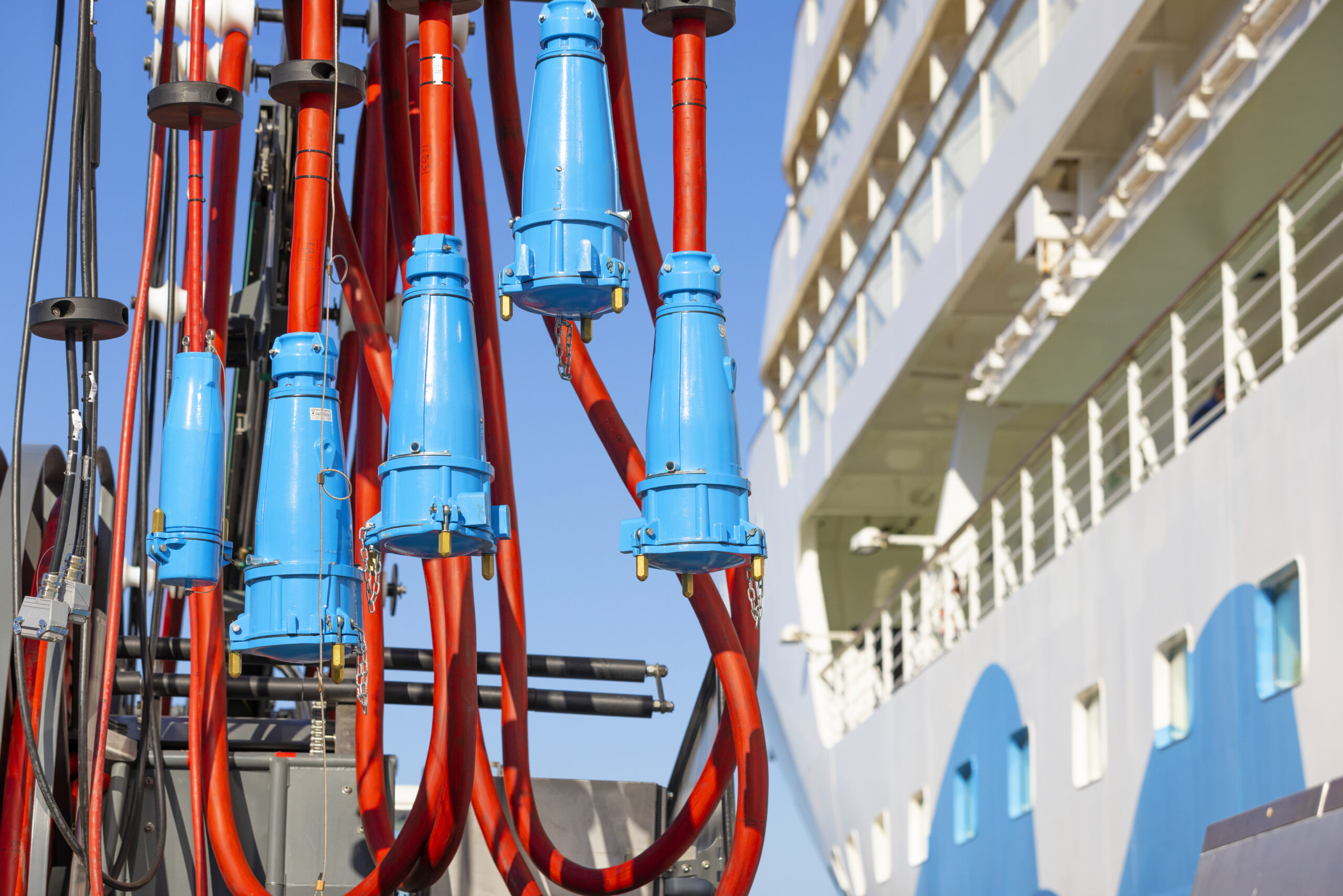Leading the Charge: How the World’s Largest Cruise Company is Using Landside Electricity to Power Ships in Port

You’ve seen an electric car plug in, maybe even an electric bike plug in, but did you know, you can also plug in a cruise ship? At Carnival Corporation, plugging in our ships to run on ample supplies of shore-based electrical power while in port is something we’re embracing enthusiastically around the world.
What is shore power?
Just because a cruise ship is in port, doesn’t mean it doesn’t need power. We still need energy to power our ships’ onboard systems and give guests the great experiences they love, from comfy air-conditioned staterooms to world-class dining options, to live music and productions shows, and even just to turn on the lights.
While the traditional approach is to use fuel-powered engines to provide the energy needed, shore power allows us to switch off our ships’ engines in port and “plug in” to use energy from the local electric grid to power systems and equipment on board. At the end of the port visit, the ship is “unplugged,” and the engines restarted for the sailaway.
A cruise ship using shore power looks similar to an electric car plugging into a charging station, except instead of recharging its batteries, the ship uses the landside electrical power directly for its energy needs, rather than its engines and fuel.
The result: the same great onboard experiences our guests and crew love, but without the engine emissions and noise in port.
It’s a win-win for the port and the cruise line
The advantages of shore power are obvious for both the port and the ship – lower air emissions in the port and the surrounding area, on top of fuel savings for the ship. In fact, using shore power can reduce total emissions by up to 98%, depending on the mix of energy sources.¹
Because cruise lines purchase the electrical energy they use, plugging into shore power also means additional revenue for the port and the local power company, and in the case of some communities, like Juneau, Alaska, lowering the cost of electricity for the residents as well.²
Making shore power more widely available
It’s been over 20 years since we first pioneered shore power for the cruise industry. And today, it is considered one of the fundamental building blocks in the marine industry’s goal to reduce greenhouse gas (GHG) emissions and address climate change.
But not every port can offer shore power, either because of the cost to install the technology or insufficient electricity sources. So, we’re pitching in to help. While only a small number of cruise ports – just 2% worldwide – are equipped with the technology today, that number is growing, thanks in part to programs like our Shore Power Grant Guide, urging policymakers to make funding available to equip key ports.
We’re also playing matchmaker, working together with our port partners and others within and outside the industry to help ports find valuable infrastructure investment dollars to make shore power a reality. And, we’re going one step further in ports that do have shore power by using electricity from renewable sources such as hydro, wind, and solar among others.
Shore power is an important part of our sustainability journey
“Using shoreside electricity to power our ships in port is an integral part of our global strategy to reduce GHG emissions and minimize our environmental footprint,” said Josh Weinstein, chief executive officer of Carnival Corporation.
Today, Carnival Corporation leads the industry with a majority of our fleet shore-power capable, meaning we have more ships able to “plug in” than there are ports equipped to provide shore power.
And, with shore power becoming more readily available in certain areas, we are working to make even more of our ships shore power-ready.
Together, with our port partners around the world, we continue to prioritize investment in this important capability – another significant step in our ongoing commitment to reducing GHG emissions, minimizing our environmental footprint and fostering healthier port environments.
Shore power is one of Carnival Corporation’s many emission reducing initiatives in pursuit of net zero GHG emissions by 2050. For more information on our long-term sustainability vision, visit www.carnivalsustainability.com.
###
¹ Environmental Protection Agency: Ocean-Going Vessel Best Practices to Improve Air Quality
² Princess Cruises Celebrates 20th Anniversary of Shore Power in Juneau



